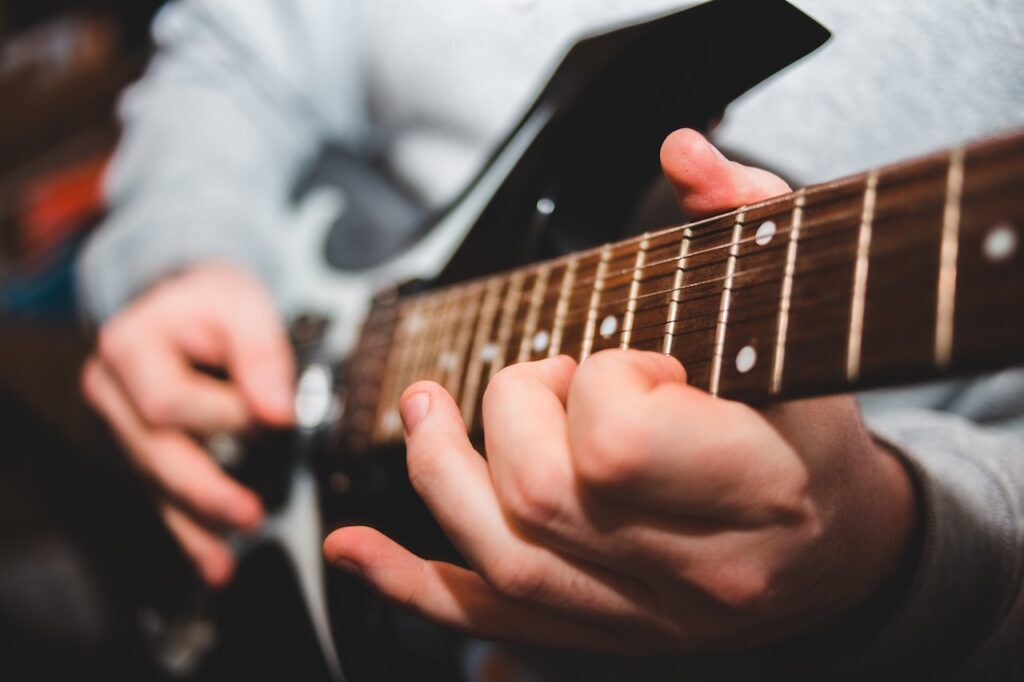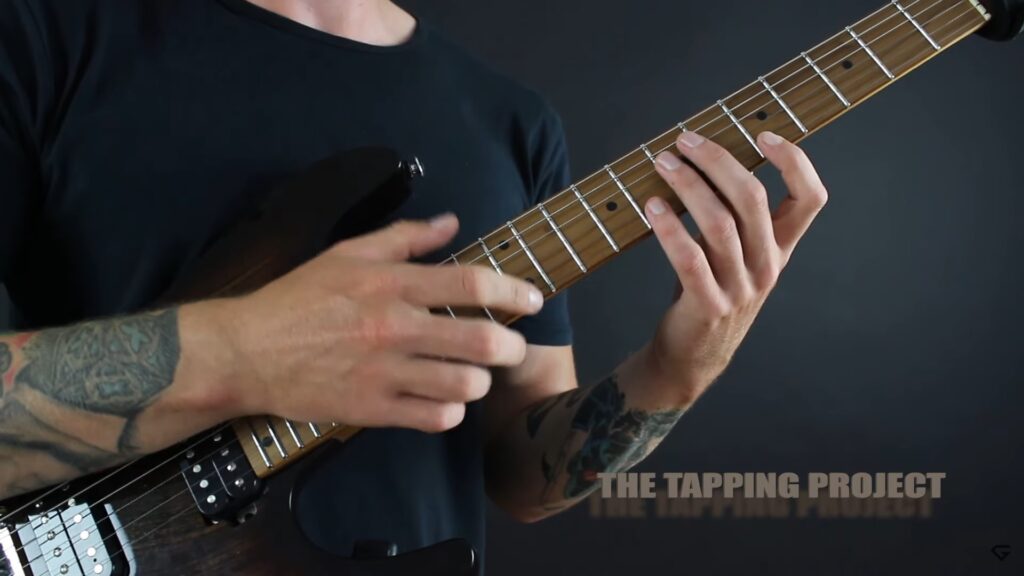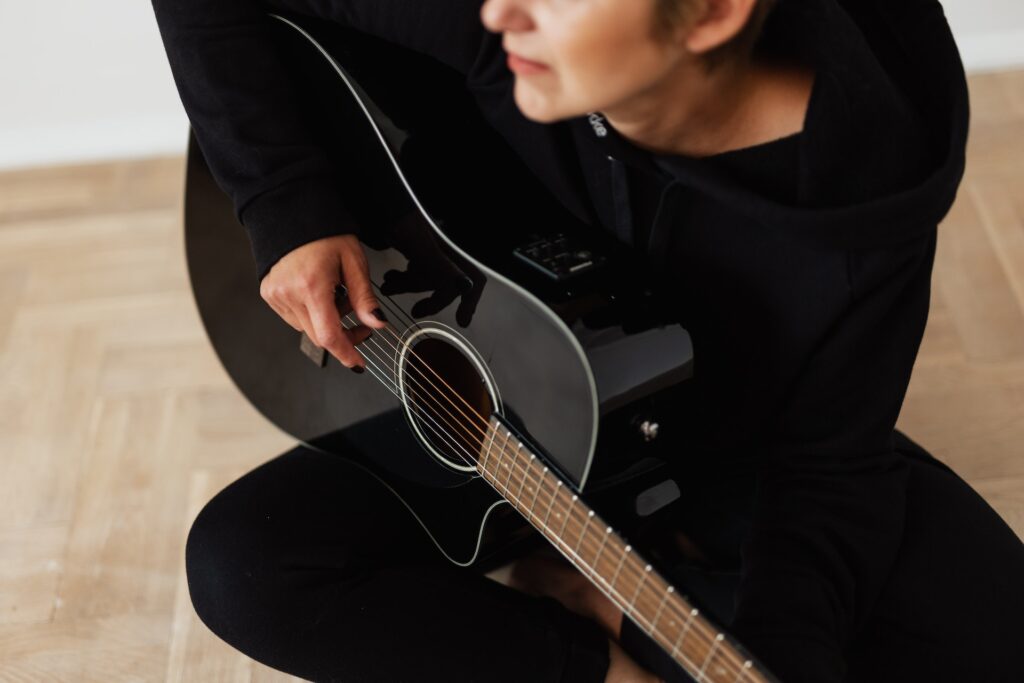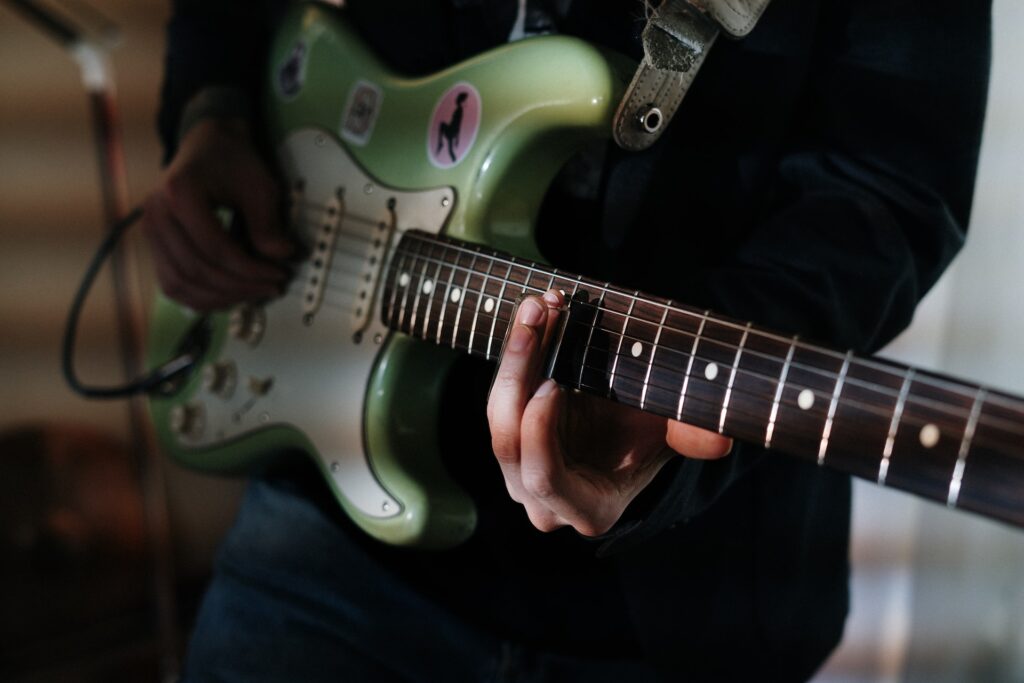Sweep picking is a popular technique among guitarists that allows for fast and fluid arpeggio playing. It involves using a combination of pick direction and efficient finger movement to create a smooth, cascading effect. If you’re looking to develop your sweep picking skills, this step-by-step guide will provide you with a series of exercises to help you progress from beginner to advanced levels.

Before diving into the exercises, it’s essential to ensure your technique is solid. Make sure you have a firm grip on the pick, position your hand comfortably, and maintain a relaxed wrist and arm. Additionally, practicing with a metronome will help you develop precision and timing. Now, let’s explore the step-by-step sweep picking exercises:
Exercise 1: Three-String Sweeping
Start with a three-string arpeggio shape, such as a major or minor triad, on the top three strings. Begin on the lowest note, and using a downward motion, sweep the pick across the strings, playing one note per string. Make sure each note rings out clearly and evenly. Then, reverse the motion, using an upward pick stroke, and descend back down the arpeggio. Practice this exercise slowly and gradually increase the speed as you gain control and accuracy.
Exercise 2: Four-String Sweeping
Expand on the previous exercise by adding an extra string. Choose a four-string arpeggio shape, such as a seventh chord or extended arpeggio. Apply the same sweeping technique, starting from the lowest note and ascending through the strings, then descending back down. Focus on maintaining evenness in your picking and ensuring that each note sounds clean and distinct. Increase the speed gradually, paying attention to synchronization between your pick and fretting hand.
Exercise 3: Ascending and Descending Sweeps
Combine ascending and descending sweeps to create flowing arpeggio sequences. Start with a simple three or four-string shape and ascend through the strings using the sweep picking technique. When you reach the highest note, reverse the motion and descend back down the arpeggio. Practice these ascending and descending sweeps smoothly, ensuring seamless transitions between the two directions. This exercise will help you develop fluidity and coordination in your sweep picking.
Exercise 4: String-Skipping Sweeps
String-skipping sweeps add complexity to your sweep picking technique. Instead of playing consecutive strings, you will skip strings within the arpeggio shape. Begin with a three-string arpeggio and skip one string, then sweep across the next two strings, skipping the middle one. As you become comfortable, introduce more string skips, creating challenging patterns that will enhance your dexterity and accuracy. Practice these string-skipping sweeps slowly at first, gradually increasing speed and complexity.
Exercise 5: Arpeggio Sequences
Expand your sweep picking repertoire by practicing arpeggio sequences. Choose a specific arpeggio type, such as major, minor, diminished, or augmented, and create sequences that ascend and descend through different inversions of the arpeggio. For example, ascend through the root position, first inversion, and second inversion, then descend back down in the same manner. This exercise will improve your fretboard knowledge, finger flexibility, and overall sweep picking proficiency.
Exercise 6: Speed and Accuracy Drills
Once you have developed a solid foundation in sweep picking, it’s time to focus on speed and accuracy. Use a metronome and set a comfortable tempo. Practice your preferred arpeggio shapes and exercises, gradually increasing the tempo in small increments. Pay close attention to accuracy and clarity, ensuring that each note is cleanly articulated. As you build speed, maintain control and precision, avoiding any sloppiness or string noise.
Exercise 7: Applied Sweep Picking in Songs
To apply your sweep picking skills in a musical context, learn songs that incorporate sweep picking passages. Study the works of guitarists known for their sweep picking prowess, such as Yngwie Malmsteen, Jason Becker, or Frank Gambale. Identify sections that feature sweep picking and practice them slowly, gradually building up speed and accuracy. This will help you integrate sweep picking into your playing and develop a musical sensibility for its application.
Remember, consistent practice and patience are key to mastering sweep picking. Gradually increase the difficulty level of the exercises, challenge yourself with new arpeggio shapes, and continually strive for clarity and precision. By following this step-by-step guide and dedicating regular practice sessions to sweep picking exercises, you will see significant progress in your technique and be on your way to becoming a proficient sweep picker.







